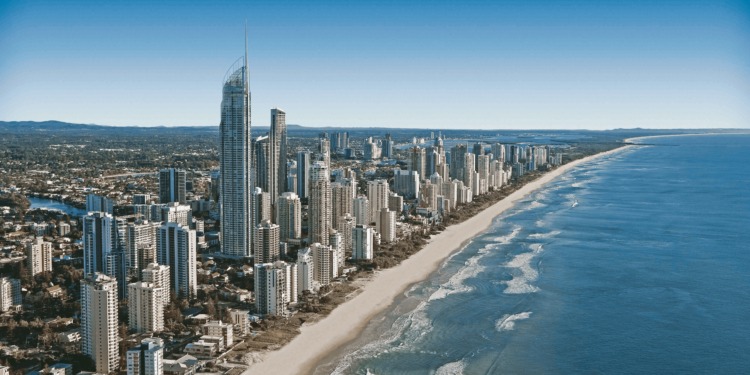Recent reports are showing that the rate of sea levels rising along the southern US coastline is far higher than previously anticipated. This is already causing damage to vulnerable areas, including the cities of New Orleans, Miami, and Houston, and the problem is only getting worse.
A study conducted by Jianjun Yin, Professor of Geosciences at the University of Arizona, suggests that 2018 hurricane Michael and 2022 hurricane Ian — which had a combined death toll of 223 people — wouldn’t have been nearly as severe if it weren’t for the rising sea levels.
“It turns out that the water level associated with Hurricane Ian was the highest on record due to the combined effect of sea-level rise and storm surge,” says Yin.
These areas are already vulnerable targets for extreme weather conditions such as hurricanes, and the rising sea levels, caused by human activity, are only contributing to more potential fatalities.
Yin’s study has found that sea level rise in the “entire Southeast of the Gulf Coast” to be almost 5 inches between 2010 and 2022, or 10.58 millimeters per year.
This figure is over double the global average which, according to satellite observations of sea level from experts at the University of Colorado at Boulder, is around 4.5 millimeters per year since 2010.
Another study, which has been published in scientific journal Nature Communications and was directed by Sönke Dangendorf, assistant professor of Ocean at Tulane University, has found the same trend with rising sea levels across the Southeast of the US Gulf Coast since 2010.
“The rates are so high in recent years that they’re similar to what would be expected at the end of the century in a very high greenhouse gas emissions scenario.” says Dangendorf in relation to the higher than expected sea levels.
It has been reported by the Kroll Bond Rating Agency (KBRA) that Louisiana is the state in the most endangered position.
_____________________________________________________________________________________________
Related Articles: Rising Sea Levels Could Cover Twice as Much Land by End of Century Than Previously Estimated | Deep-Sea Mining: Disaster for the Planet or Sustainable Solution? | Arctic Summer Sea Ice Could Disappear As Soon As 2035
______________________________________________________________________________________________
According to a Kroll Bond Rating Agency KBRA study, Louisiana is in the most endangered position and could account for 56% of the total 4.3 million acres of US land that current estimates show will be underwater by 2050.
Other states in significant danger of land loss, the study says, are Florida, North Carolina and Texas.
One of the reasons that Louisiana is so significantly affected in comparison to other coastal states is that it suffers from sediment compaction and extraction of underground water and fluids. Large areas of the coast in Louisiana are sinking, and aren’t being replaced by sediment flow from the Mississippi River, according to the report.
Sediment flow is important because it helps to maintain wetlands, which protect against coastal erosion and sea level rise.
It is currently estimated that the Atlantic Coast is at less risk than the Gulf Coast, and the Pacific Coast even less. This includes Pacific islands such as Hawaii. Even though small islands are usually the land areas at the highest risk, Hawaii is protected by its “steeply sloping terrain.”
The KBRA report has concluded that the Gulf Coast accounts for 72% of all predicted US land that will be lost to sea level rise before 2050.
Jennifer Granholm, secretary of energy for the US, has responded to the recent reports, emphasizing the importance of investing further in green energy to prevent further damage due to climate change.
We can't let up on our fight against the climate crisis. @POTUS is charging forward to accomplish our climate goals by expanding access to and deploying clean energy solutions in communities across the country. https://t.co/8uNCvzA8GZ
— Secretary Jennifer Granholm (@SecGranholm) April 10, 2023
How will these areas be affected?
A change in climate will not increase the number of hurricanes hitting the US Gulf, but will certainly increase their intensity. The speed at which they travel will decrease, whilst their strength and power to destroy will increase.
High sea levels increase the risk of flooding that is caused by hurricanes..
A study of hurricane Sandy found that high sea levels increased the risk of flooding by three times, and at the rate the sea levels are currently rising, this number could easily ramp up to four.
As coastal areas continue to be affected, there will be a financial shift as properties in the regions will lose their value. This could harm the financial stability of homeowners and “erode local tax bases.”
This can in turn be a “threat to affordable housing” given the extreme costs of creating the infrastructure that is strong enough to protect houses from damage.
Local business will also be impacted as people will have to vacate their properties because they are no longer safe spaces to live in.
What are US cities doing to protect themselves from the risk of flooding?
Some US cities have already got the infrastructure to protect themselves from flooding, such as New York and Miami.
After 2012 hurricane Sandy, New York invested $20 billion dollars into a “climate resilience plan” created to protect the city and its dwellers.
Projects include raised parklands and moveable floodgates.
Many other cities around the world that find themselves lower than sea level, like Miami, Bangkok and Shanghai, also have protective measures in place. Roads are being raised, open spaces — which are a barrier to rain water — are being reduced, and temporary flood panels are being attached to buildings.
There are currently further ongoing plans under development to protect Houston.
US President Joe Biden has signed an agreement for the Ike Dike Coastal Barrier protection project which is a $34 billion dollar plan to build a “storm surge protection” system along the coast of Texas.
The system will create dunes within the Galveston Bay, which will protect the area from the storms coming in from the Mexican Gulf and into the Housten ship channel.
This project was first proposed after hurricane Ike hit Texas in 2008, causing $30 billion of damage across the state.
Meanwhile, sea levels are rising around the world and China is also reporting higher sea levels. China’s coastal sea levels hit their highest on record in 2022, and have increased by an average of 3.5 millimetres (0.14 inch) per year since they were first measured in 1980, a government official said on April 12 according to Reuters.
Chinese officials have no doubts that the cause is climate change. In an annual report published last May, China blamed the faster-than-average rise in sea levels on higher water temperatures as well as the melting of glaciers around the world and in the Arctic and Antarctica. And it said it expected those sea level rises to lead to the erosion of coastal ecosystems, the loss of tidal flats and an increased risk of flooding and salt tide intrusions in coastal cities.
What America will do to address the problem is certain to be closely followed by observers around the world, to see if there are “lessons” that can be learned and usefully applied elsewhere.
______________________________________________________________________________________________
Editor’s Note: The opinions expressed here by Impakter.com columnists are their own, not those of Impakter.com. — In the Featured Photo: sea levels by the sea. Featured Photo Credit: Pexels.com










